33RD ANNUAL EDITION
2014
NOVEL & SHORTSTORY WRITERS MARKET
Rachel Randall, Editor

WritersDigest.com
Cincinnati, Ohio
FROM THE
EDITOR

Many writers start writing because for them, the novel or the short story holds a certain power the ability to transport, to captivate, to frighten or delight and they want to harness that power. As they move forward, they begin to explore their craft. They learn the techniques of crafting memorable characters and creating tension and conflict. They write and revise. They hone their skills. They practice. A writer could spend the rest of her career at this stage, but eventually she turns her eye to getting published and to the business of writing. She still writes because she loves to write, but now she has aspirations: of publication, of recognition, of success.
Wherever you are in your writing journey, you hold in your hands an invaluable tool, one that combines your love for the craft with the business of fiction writing. Novel & Short Story Writers Market has something for every writer. In addition to providing the trusted resources for which NSSWM is renowned-listings for book publishers, agents, online markets, contests and awards, and more-Ive focused on curating a variety of content focused on the topics that matter the most to you, the writer.
Inside NSSWM youll learn how to raise your characters above the status quo from master storyteller Steven James ().
Writing fiction in the twenty-first century presents its own set of exciting challenges. Writers must now concern themselves not only with producing excellent novels and short stories, but also with promoting themselves and their work across several platforms, improving their query-writing skills, and being mindful of the many ways in which their work can be published. Novel & Short Story Writers Market will aid you with all of these considerations and will serve as both map and compass wherever your writing journey may take you.
Rachel Randall
Content Editor, Writers Digest Books
HOW TO USE NSSWM
To make the most of Novel & Short Story Writers Market, you need to know how to use it. And with more than five hundred pages of fiction publishing markets and resources, a writer could easily get lost amid the information. This quick-start guide will help you navigate through the pages of Novel & Short Story Writers Market, as well as the fiction publishing process, and emerge with your dream to see your work in print accomplished.
1. READ, READ, READ. Read numerous magazines, fiction collections, and novels to determine if your fiction compares favorably with work currently being published. If your fiction is at least the same caliber as what youre reading, then move on to step two. If not, postpone submitting your work and spend your time polishing your fiction. Writing and reading the work of others are the best ways to improve craft.
For help with craft and critique of your work: Youll find advice and inspiration from best-selling authors and seasoned writers in the articles found in the first few sections of this book (Craft & Technique, Getting Published, and Marketing & Promotion). Youll find contest listings in the Contests & Awards section and even more listings to help you locate various events where you can hone your craft in the Conferences & Workshops section.
2. ANALYZE YOUR FICTION. Determine the type of fiction you write to best target markets most suitable for your work. Do you write literary, genre, mainstream, or one of many other categories of fiction? For definitions and explanations of genres and subgenres, check out the Glossary and the Genre Glossary in the Resources section of the book. There are magazines and presses seeking specialized work in each of these areas as well as numerous others.
For editors and publishers with specialized interests, see the Category Index in the back of the book.
3. LEARN ABOUT THE MARKET. Read Writers Digest magazine (F+W Media, Inc.); Publishers Weekly, the trade magazine of the publishing industry; and Independent Publisher, which contains information about small- to medium-sized independent presses. And dont forget the Internet. The number of sites for writers seems to grow daily, and among them youll find www.writersmarket.com and www.writersdigest.com.
4. FIND MARKETS FOR YOUR WORK. There are a variety of ways to locate markets for fiction. The periodical section in bookstores and libraries is a great place to discover new journals and magazines that might be open to your type of short stories. Read writing-related magazines and newsletters for information about new markets and publications seeking fiction submissions. Also, frequently browse bookstore shelves to see what novels and short story collections are being published and by whom. Check acknowledgment pages for names of editors and agents, too. Online journals often have links to the websites of other journals that may publish fiction. And last but certainly not least, read the listings found here in Novel & Short Story Writers Market.
Also, dont forget to utilize the various category Indexes at the back of this book to help you target the market for your fiction.
5. SEND FOR GUIDELINES. In the listings in this book, we try to include as much submission information as we can get from editors and publishers. Over the course of the year, however, editors expectations and needs may change. Therefore, it is best to request submission guidelines by sending a self-addressed stamped envelope (SASE). You can also check each magazines and presss website they usually contain a page with guideline information. For an even more comprehensive and continually updated online markets list, you can obtain a subscription to www.writersmarket.com.
6. BEGIN YOUR PUBLISHING EFFORTS WITH JOURNALS AND CONTESTS OPEN TO BEGINNERS. If this is your first attempt at publishing your work, your best bet is to begin with local publications or those you know are open to beginning writers. After you have built a publication history, you can try the more prestigious and nationally distributed magazines. For markets most open to beginners, look for the  symbol preceding listing titles. Also, look for the
symbol preceding listing titles. Also, look for the  symbol that identifies markets open to exceptional work from beginners as well as work from experienced, previously published writers.
symbol that identifies markets open to exceptional work from beginners as well as work from experienced, previously published writers.
7. SUBMIT YOUR FICTION IN A PROFESSIONAL MANNER. Take the time to show editors that you care about your work and are serious about publishing. By following a publications or book publishers submission guidelines and practicing standard submission etiquette, you can increase your chances that an editor will want to take the time to read your work and consider it for publication. Remember, first impressions last; a carelessly assembled submission packet can jeopardize your chances before your story or novel manuscript has had a chance to speak for itself.

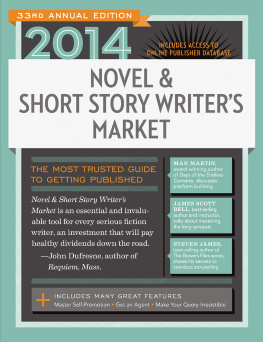

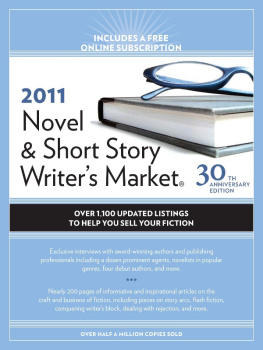
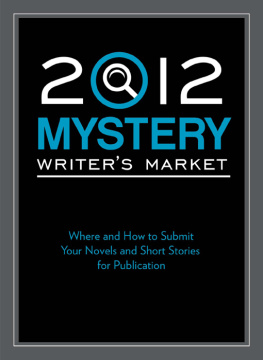
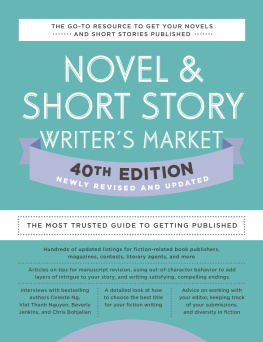




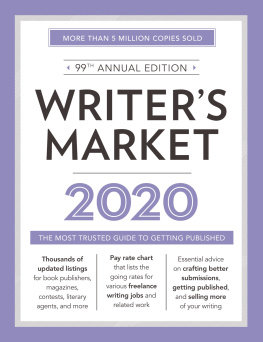

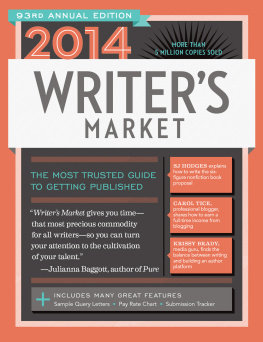



 symbol preceding listing titles. Also, look for the
symbol preceding listing titles. Also, look for the  symbol that identifies markets open to exceptional work from beginners as well as work from experienced, previously published writers.
symbol that identifies markets open to exceptional work from beginners as well as work from experienced, previously published writers.